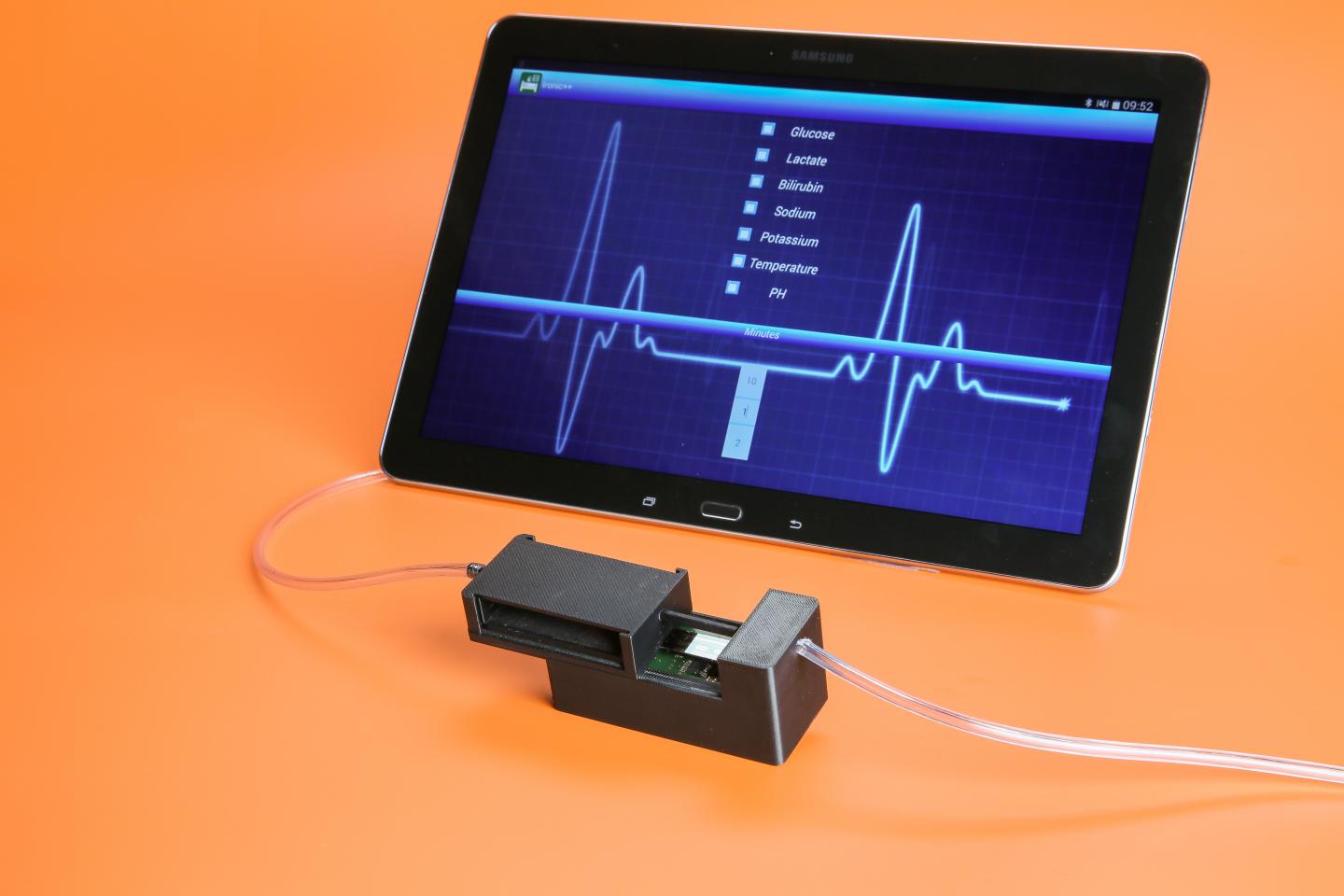Miniaturized Device Monitors Blood Metabolites in ICU
By LabMedica International staff writers
Posted on 03 Nov 2015
A miniaturized microfluidic device could allow healthcare workers to monitor key metabolites in real time in intensive care units (ICUs).Posted on 03 Nov 2015
Developed by researchers at Ecole Polytechnique Fédérale de Lausanne (EPFL; Switzerland) the device consists of a little black box with embedded biosensors that is attached to a patient’s drainage tube. The prototype device, fabricated using a three dimensional (3-D) printer, can currently monitor real time levels of glucose, lactate, bilirubin, calcium, and potassium. Eventually, according to the researchers, up to 40 different molecules could be monitored using the device, thus reducing the need for additional diagnostic devices.

Image: The prototype microfluidic metabolite device (Photo courtesy of EPFL).
The prototype includes a fully integrated hardware platform on a printed circuit board (PCB) that connects the biosensors to a read-out on the front end, as well as wireless connectivity via a Bluetooth module for data transmission to a mobile Android interface for visualization. Preliminary in vitro tests on calibration for the five key metabolites of interest were conducted successfully on rodents. A study describing the device and the results was presented at the annual Biomedical Circuits and Systems Conference (BioCAS), held during October 2015 in Atlanta (GA, USA).
“We embedded biosensors in it to measure several different substances in the blood or blood serum along with an array of electronics to transmit the results in real time to a tablet via Bluetooth,” said study presenter Sandro Carrara, PhD, a scientist at the EPFL integrated systems laboratory (LSI). “Nowadays, several of these levels are measured periodically. But in some cases, any change in level calls for an immediate response, something that is not possible with the existing systems.”
Microfluidics intersects engineering, physics, chemistry, biochemistry, nanotechnology, and biotechnology, in order to process low volumes of fluid for multiplexing, automation, and high-throughput screening. Behavior, control, and manipulation of the fluids is geometrically constrained to a small, typically submillimeter, scale using passive fluid control techniques, such as capillary forces. Often processes which are normally carried out in a lab are miniaturized on a single chip in order to enhance efficiency and mobility, as well as reducing sample and reagent volumes.
Related Links:
Ecole Polytechnique Fédérale de Lausanne










 (3) (1).png)



